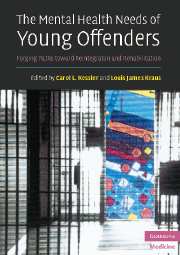
- Cited by 2
-
Cited byCrossref Citations
This Book has been cited by the following publications. This list is generated based on data provided by Crossref.
2009. Publications Received. Contemporary Sociology: A Journal of Reviews, Vol. 38, Issue. 1, p. 102.
Houchins, David E. Jolivette, Kristine Shippen, Margaret E. and Lambert, Richard 2010. Advancing High-Quality Literacy Research in juvenile Justice: Methodological and Practical Considerations. Behavioral Disorders, Vol. 36, Issue. 1, p. 61.
- Publisher:
- Cambridge University Press
- Online publication date:
- August 2009
- Print publication year:
- 2007
- Online ISBN:
- 9780511543913


